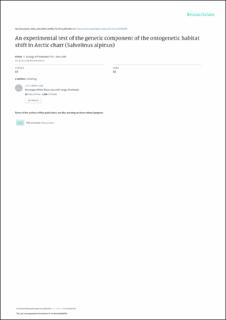| dc.description.abstract | Fry of the Arctic charr, Salvelinus alpinus, were experimentally stocked into a small fish-free lake to test the hypothesis that the size-dependent habitat shift from the epibenthic to the pelagic habitat is genetically determined. The charr originated from a nearby lake inhabiting predatory brown trout Salmo trutta. The cohort of stocked charr was investigated for three years. The Arctic charr started to exploit the pelagic habitat in their first summer at a size of 7–9 cm in contrast to about 15 cm in the donor lake. In the next two summers, the pelagic fraction of the cohort increased. The main fraction lived in epibenthic areas, utilizing the same prey as pelagic charr. Water temperature moderated the habitat use of juveniles such that they avoided warm (>16°C) waters and resided in cool, deep areas. The result was consistent with the hypothesis of a tradeoff between feeding benefit and the predation risk producing spatial segregation of Arctic charr and demonstrated that the fish can facultatively respond to predation risk and adjust the size at which they migrate to the pelagic zone to feed on zooplankton. | en_US |
